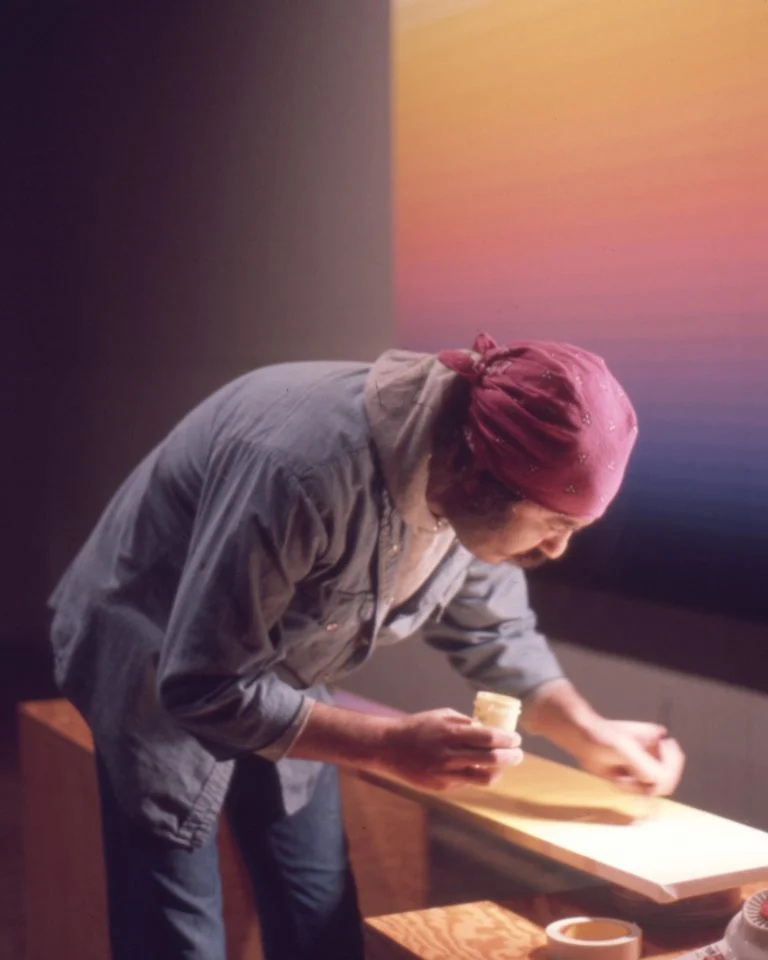
Archive photo of Norman Zammitt in the studio. Courtesy of Karma Gallery
Excerpts from the Article by Annikka Olsen, Galleries Editor (Artnet):
“Roughly 60 years since Zammitt’s first exhibition in New York, a new solo show at Karma gallery brings to light two of the artist’s most significant bodies of work.
American art in the 20th century was dominated by the New York art scene—think Minimalism, Abstract Expressionism, Pop art—but in the mid-1960s, a then little-known movement originating in Southern California began to gain broader critical attention: Light and Space.
Formed by a loosely associated group of artists, the Light and Space movement reflected a preoccupation with visual perception, as well as penchant for material experimentation. While artists like Larry Bell, Robert Irwin, and James Turrell have become some of the best-known of the movement with their large-scale installations and unconventional use of both artificial and natural light, artist Norman Zammitt, who died in 2007, was a pioneering colorist whose work reflected the core ethos of the Light and Space. It was less a style than an experience, a kind of art that dissolved boundaries and asked viewers to step into a world of perception itself. This was Light and Space: a sensorial field that expanded art beyond canvas and object into the realm of atmosphere and phenomena.”
https://news.artnet.com/art-world/norman-zammitt-a-degree-of-light-2691338
__________________
Barry Raphael, co-archivist of Lumonics:
Mel and Dorothy Tanner, the founders of Lumonics, began their work with light in Miami in the mid1960s, at the same time as the Light and Space movement got under way yet were not familiar with it. The Movement didn’t receive its name until an exhibit in the early 1970s. In 1969, the Tanners opened their light and sound theatre named AfterImage. The components were their light sculptures, music, projection, and electronics. In 1970, it was renamed Lumonics, which also became the name for the artform.
Mel and Dorothy Tanner (Wikipedia)
